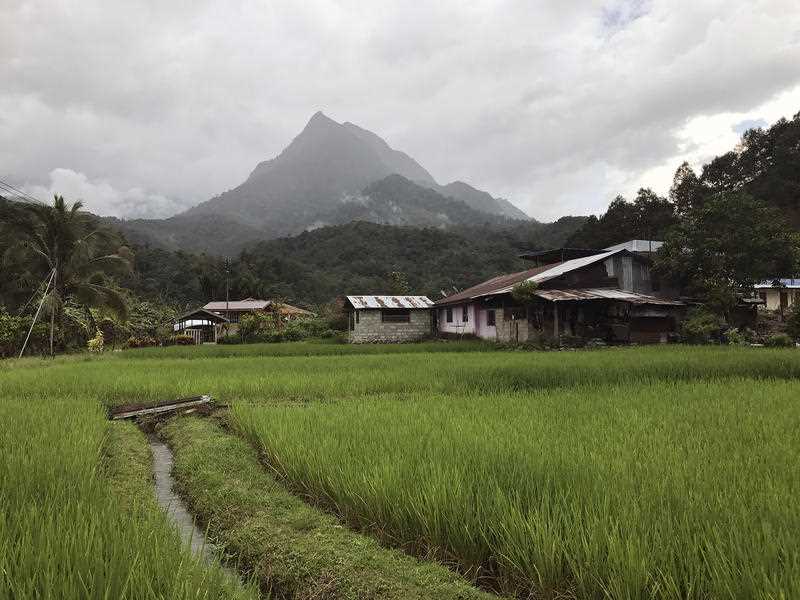The horrors of Sandakan POW camp in northern Borneo may seem a world away but those separated by just a generation are still seeking to understand what went on there.
That’s why historian Lynette Silver says it’s important annual Anzac Day commemorations at the site of the former Japanese camp in Sabah, modern-day Malaysia, remain rooted with the family members who make the journey.
Ms Silver will this year lead a group of 17 mostly relatives from all over Australia to walk in the footsteps of their lost kin.
Beginning in Singapore and taking them across the South China Sea, the journey has become a yearly pilgrimage thanks to her dedication and passion for keeping the story alive.
One thing the group will do is burn gum leaves, a tradition stemming from the First World War and carried on by the 8th Division in Malaya and Singapore when the wives, girlfriends and mothers of soldiers used the eucalypts to wrap packages.
“At night the diggers would throw the gum leaves on the fire to remind them of home,” Ms Silver says.
“There’s nothing quite like the scent of burning Australian gum leaves.”
Private Stuart Harold White was just 25 when he died at Sandakan on February 6, 1945, having spent three long years in the camp enduring hunger, disease, torture and extreme cruelty at the hands of his captors.
Niece, Lyn Scotchmoor who is now in her 60s, tells AAP preparing to travel to the place of her uncle’s death has been emotional but a great honour.
“I’ve got a picture of him wandering through one of the markets in Singapore with his slouch hat on,” she says.
“There’s a phrase, ‘I know of him but he does not know of me’.”
Ms Scotchmoor will learn more of her uncle’s experiences along the way, leaving photos, writing letters and taking part in a series of personal memorials.
“When he left, the family sort of changed and I think there was a lot of sadness about him,’ she says.
“I want to say that ‘we’ve found him’.”
Around 1500 Australian soldiers were sent to Sandakan following the fall of Singapore on February 15, 1942. They were joined the following year by another 500 Australian and around 750 British POWs originally captured in Java.
While initially the conditions imposed on the men were bearable, as the Japanese war effort deteriorated through to 1944, so did the camp and the rate of prisoner deaths soared.
In the chaos of the Japanese capitulation and ultimate surrender, a series of death marches, deliberate executions, various illnesses and starvation left just six Australian prisoners alive by the end of the war, all of who had managed to escape.
Lance Corporal John William Mitchell survived a 250km death march to another temporary camp at Ranau but died on February 20, 1945 after contracting dysentery alongside 47 others who were buried in unnamed graves at the site.
James Ross’ father was cousins with LC Mitchell and also served in the war, ferrying men home from Changi POW camp in Singapore.
“I got a bare minimum of information out of my father while he was still alive,” Mr Ross says.
“I think because he thought war was so horrible he didn’t want to burden his two sons with that.
“I want to get a feel for what they went through. Try and imagine it in a way – as awful as it was.”
A botched rescue operation that left hundreds of Australians to die at Sandakan who might otherwise have been saved, followed by decades of government silence, was uncovered by Ms Silver in her book, Sandakan: A Conspiracy of Silence.
“The next of kin, all they knew when the war was finished was that their relative had died in Borneo. No details, nothing at all,” she explained.
She started holding memorials on the site in 2000, at which point she says it was decidedly informal – in some way invoking the last time Anzac Day was marked there, by the camp’s prisoners in 1944.
“It’s far more than just an Anzac Day service. This is highly personal to the people that are coming along,” Ms Silver says.
“They’ve got photographs of them, they see them as real people because it’s their own flesh and blood.”
She says a key difference is rather than official representatives laying wreaths and making speeches, the families of the POWs are at the centre of proceedings.
“For many of these people who come with me, their first personal act of remembrance is at Anzac Day over there.
“I’ve taken children whose fathers died there who couldn’t say the word Sandakan without crying.”
For locals too, the service is a catharsis from the horrors of the Japanese Occupation, during which 14 per cent of the civilian population was wiped out, with some shot for helping Australian POWs.
“They suffered just as much as we did. It’s not just an Australian commemoration, it’s Australian and Sabah,” Ms Silver says.
By Duncan Murray in Sydney



